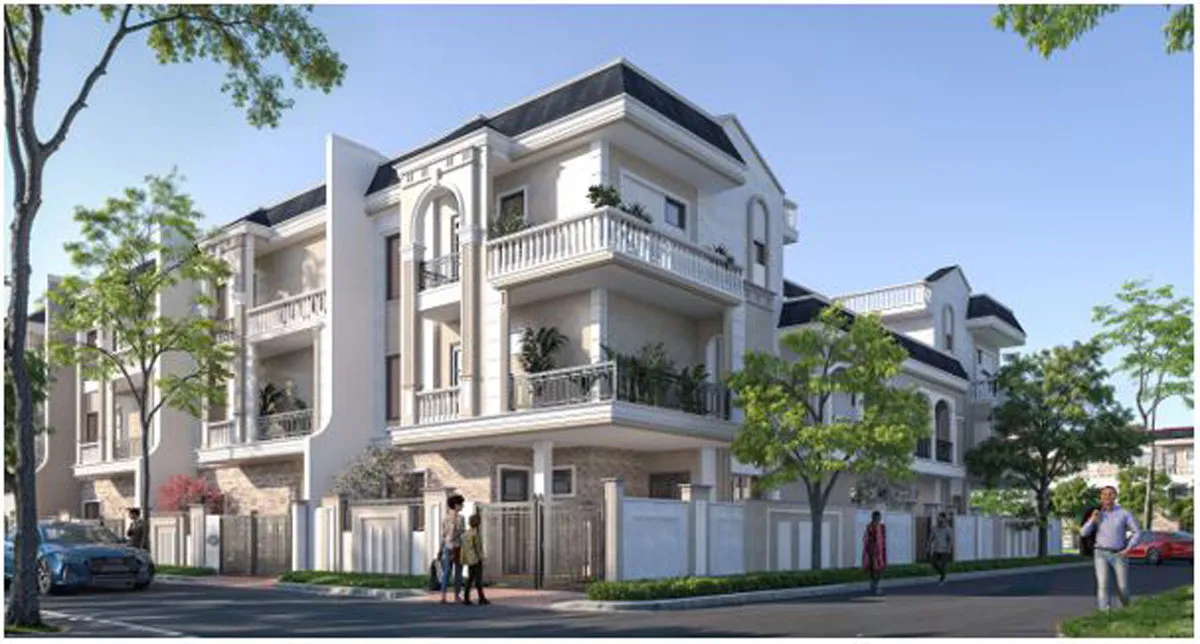India’s next decade of growth will be scripted by its urban and digital sectors and their intersections.
Our ambitions of being a US$ 5 trillion economy and global powerhouse by 2024-25 can be met only when all sectors working towards bumping up India’s infrastructure work and speak to each other. This will need to be supported by integrated planning, and financing including through innovative ways, use of technology, and speedier implementation.
A welcome development in this context is the launch of the PM Gati Shakti National Master Plan for Multi-modal Connectivity, essentially a digital platform to bring in 16 ministries, involved in infrastructure connectivity projects in the country.
This platform enables ministries including roads, railways, urban development, ports, and others to connect, co-create solutions and coordinate the logistics and linkages required to create a multi-modal pipeline and clusters that will scale up and bring efforts together. This will be supported by the unified approach that exists between industry, government, and the private sector in the collective pursuit of nation-building.
Considering the heavy lifting that the urban sector will need to take up within Gati Shakti, it should be viewed as an opportunity to build into the integrated nature of the Government’s vision for development through the shared digital infrastructure interfaces.
Gati Shakti is a gateway to fully harnessing the potential of our cities and citizens by focusing on scaling the power of digital platforms and technology to every urban area in the country. As we complete 75 years of our Independence, it is time to reflect on the key learnings from various urban experiments and realize the emergent role of a unified approach founded on the principles of collaboration, co-learning, and co-creating.
Changing mindsets spark beginnings for sustainable transitions. And sustainable transitions cannot happen without a bottom-up localized approach. Given that urban India is likely to be the predominant focus of these investments, it is important that they are equipped with well-articulated strategies and plans to implement the innovations and initiatives at scale and support their growth momentum in an inclusive and sustainable manner. Achieving the envisaged objectives requires a change in rhetoric in cities from ‘what to do’ to ‘how to do’. It requires improvements in work processes, basic digitization, integration of datasets, development of standards and protocols – innovative ideas and solutions – tools that help develop new insights and deliver higher performance per rupee.
Cities have emerged as major contributors to the national economy. Cities play a strong catalytic role in moving towards national economic self-reliance. In order to fully harness this potential, cities will have to become more competitive and develop strong inter-city and regional linkages to optimize productivity and investment regimes that facilitate local economic development. This requires cities to become strategic about their plans for growth and implementation.
Urban planning in India has largely been based on land use planning, the building of infrastructure, and population distribution. So far, this approach to planning provided a regulatory framework for controlling the growth of urban areas. This needs a paradigm shift.
Self-reliant urban India from the perspective of strategic planning means the transition from “regulatory” and “norm-based” planning to “outcome-oriented” and “evidence-based” planning. Strategic planning is the first step in pushing cities toward improving economic productivity, aligning the city’s human capital, finances, and spatial strategies toward local economic development.
Strategic planning will help cities understand their specific strengths and weakness, estimate various constraints and potentials for economic development, develop spatial strategies that incentivize/support growth and productivity, and design enabling policies, smoother business processes, and effective institutional frameworks. The process of strategic planning should be undertaken as part of the Gati Shakti plan at various scales such as
city clusters, regional and national which will require coordination between various plans and ensure optimum productivity and economic yield that can propel India on the path to self-reliance.
Cities consist of multiple and overlapping systems: the transport system, water, and sewerage system, electrical system, and parking system. However, urban planning projects too often treat each of these systems in silos, without considering the interconnections between people, systems, and technology.
A well-developed digital infrastructure allows cities to access, share, collate and use the information contained in the sum of interactions among people, places, and systems. The ability to capture, classify and analyze information from different systems and use this to plan for city operations as a united “system of systems” brings unexpected and broad-ranging benefits. The creation of diverse platforms and the collection and publishing of city data will provide the opportunity to transform city life by allowing cities and their citizens to create, monitor, and measure the progress of their cities in a more informed way. Access to urban data could lead to more informed and empowered citizens as well as help governments in making more informed decisions.
The structure of contemporary urban governance in India is a complex multi-level system comprising multiple authorities such as municipal governments, metropolitan regional development authorities, urban development authorities, transit bodies, urban finance corporations, and parastatals agencies. This structure has made
the functioning of cities complex in form, structures, processes, administration, governance, and management. Seamless integration of all these agencies/levels leads to unified governance.
Unified governance can encourage, facilitate, govern and manage the objectives of the Atmanirbhar campaign. It is an iterative process that involves regular and periodic assessments and updates of planning activities including finance, governance, and management. It will orchestrate people, processes, and technology to deliver trust among citizens, through partnerships of operations, stakeholders’ and high-quality data. This solution will manage, control and operate diverse solutions that support existing legacy automation and extend to newer tool-based (or custom) intelligent automation solutions.
The unified governance approach does not focus on consolidation of power/authority at one position, but it is unification/consolidation of the authorities on a single platform which will give impetus to “collective decision making” and “unified actions”. This helps mitigate many undesired/avoidable actions and reduce externalities. Feedback loops can play a significant role in the improvement of the unified governance approach.
Integrated application of digital technologies to infrastructure and services should be used to improve municipal services. Cities need to build a centralised single source of information for all citizen-centric services/functions/operations by consolidating city infrastructure/assets into a single operations platform for delivery of services, monitoring of environmental parameters as well as handling exigencies in disasters (e.g. Covid-19). The infrastructure so created should be scalable (both horizontally and vertically) to accommodate the growing needs of the services and interoperable units (field devices, sensors, etc.). A large amount of data generated by the use of city infrastructure and citizen services carries vital city information and provides deep insight into the way the city operates. This should be used extensively for planning, re-design, and proactive preparation for future growth as well as for handling any emergency/disaster situation.
The critical focus should be to not only build capabilities for new approaches but also to learn new responsibilities and attitudes for urban management. Building local capacity through long-term support, formal training, technical assistance, and employing skilled professionals is essential to institutionalizing change. We need to reclaim the term ‘capacity-building’ by identifying the needs of our ULB better and bridging the gap between policy and practice. The need of the hour is to strengthen urban project preparation and procurement; enable the raising of financing through markets; and monitor performance better.
We are now at the inflection point where massive urban reforms and digital expansion are going to simultaneously manifest. Let this opportunity not slip by. We need every stakeholder, especially the urban industry as the frontrunner in stimulating innovation and growth with other ministries to unlock new opportunities in this new India to realise our Gati Shakti.
By: Hitesh Vaidya, Director, National Institute of Urban Affairs




















